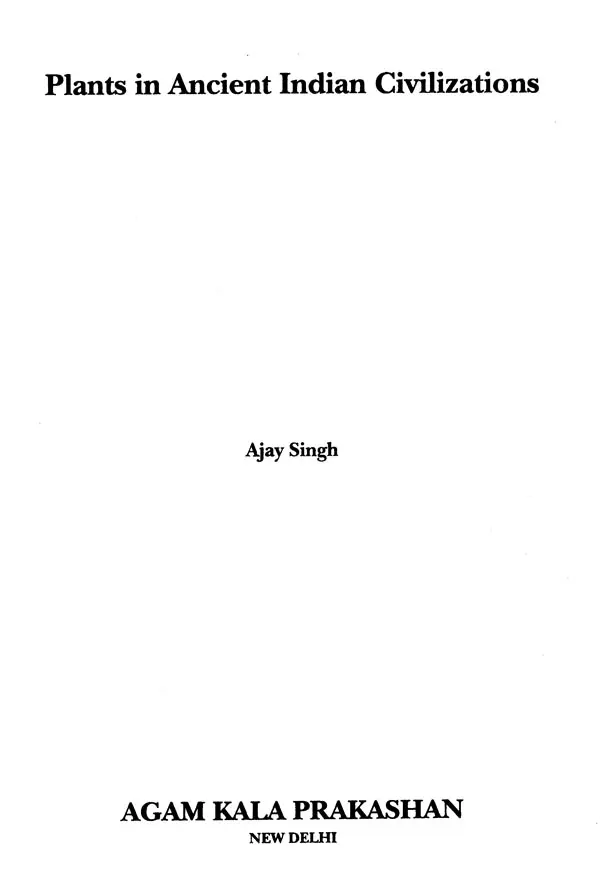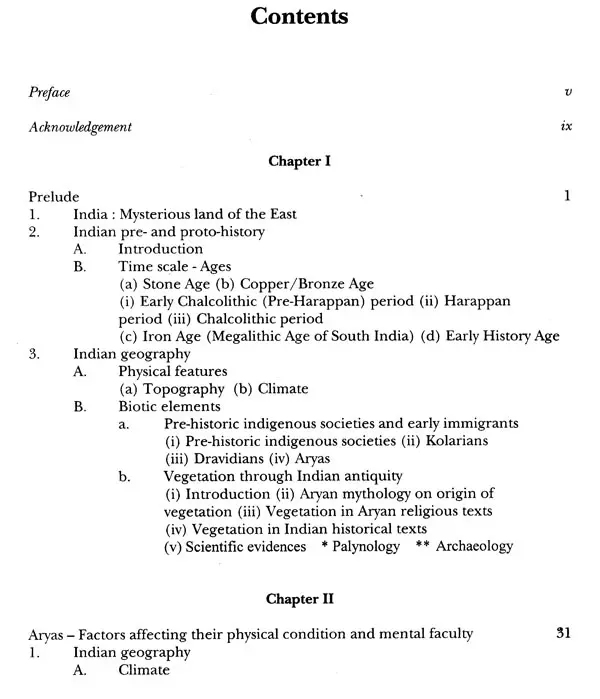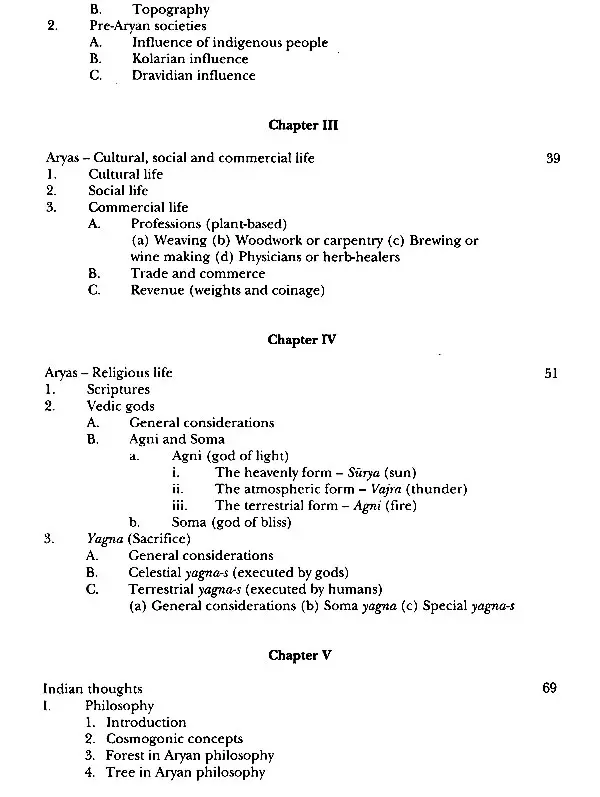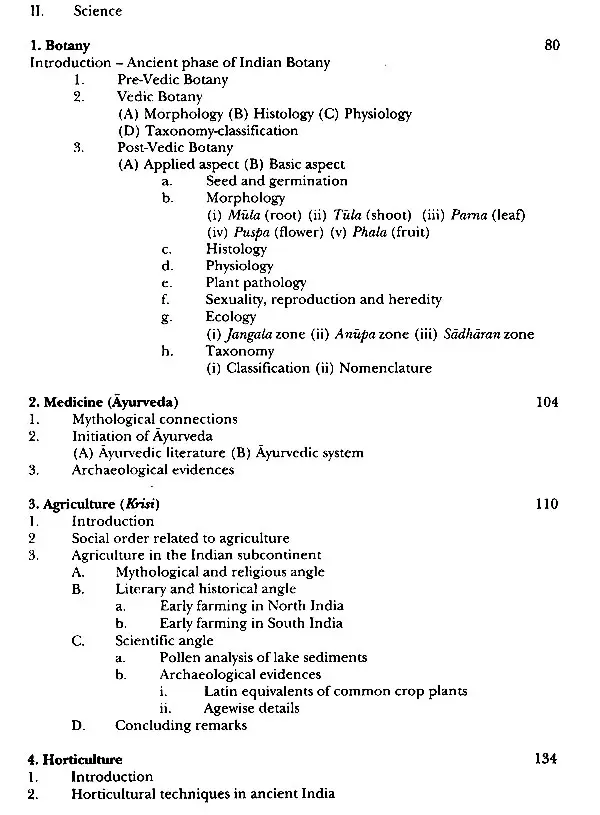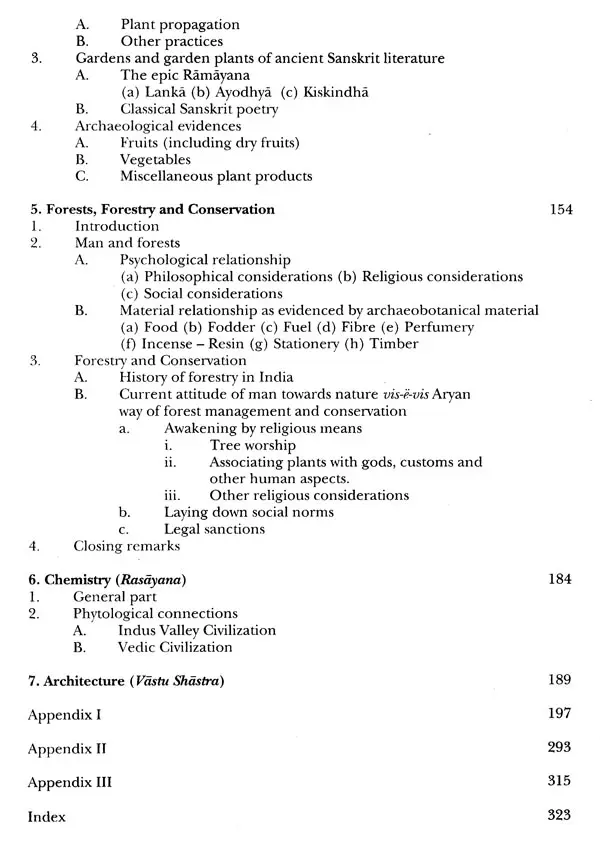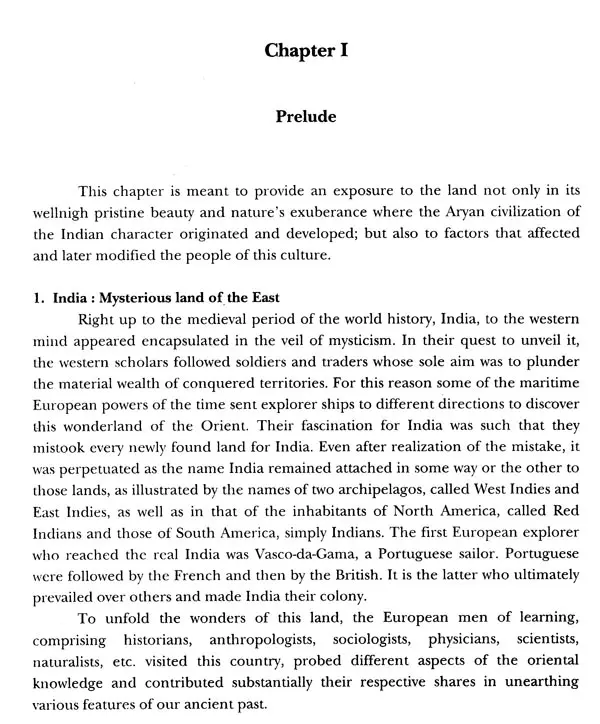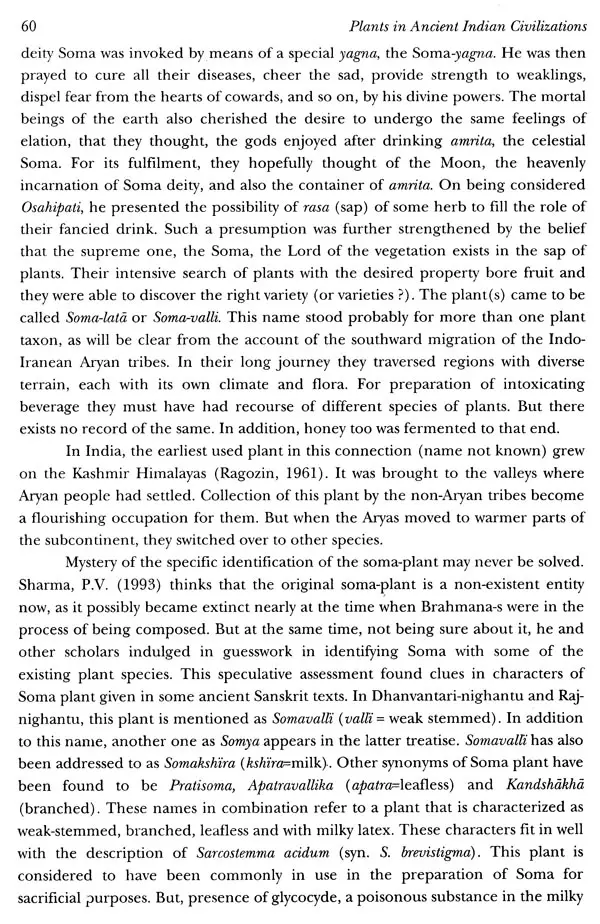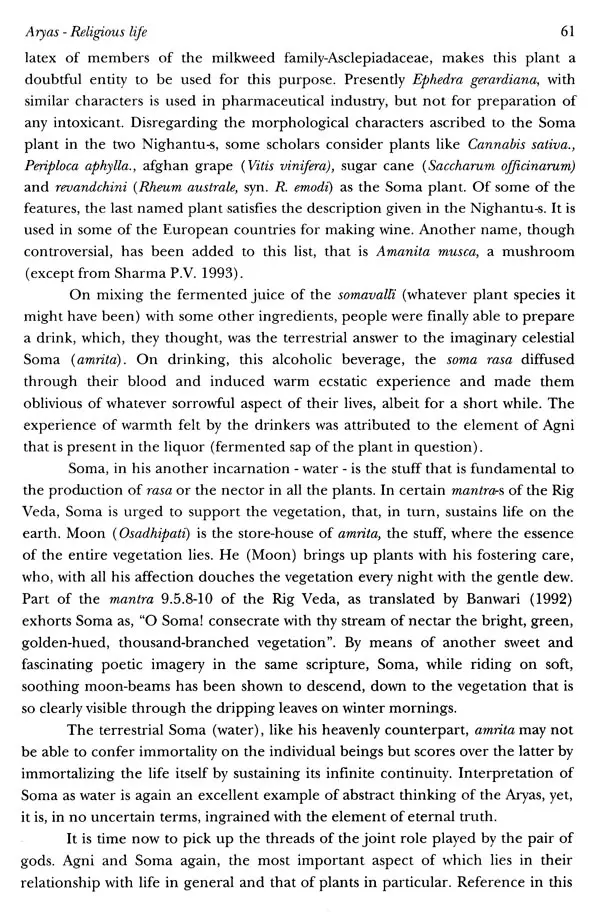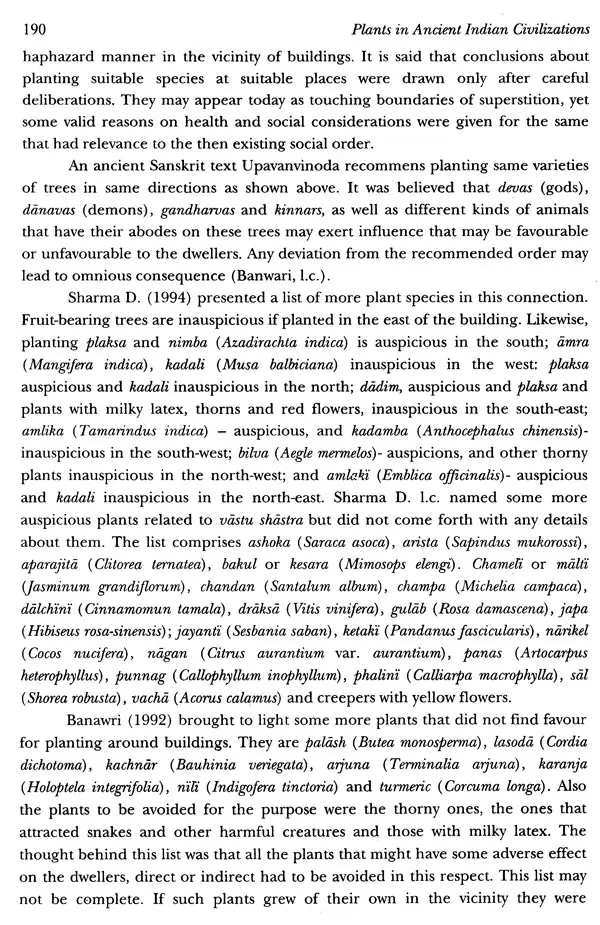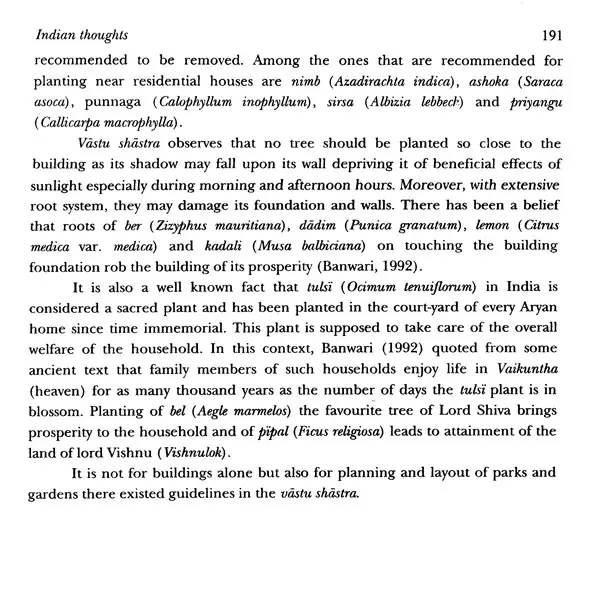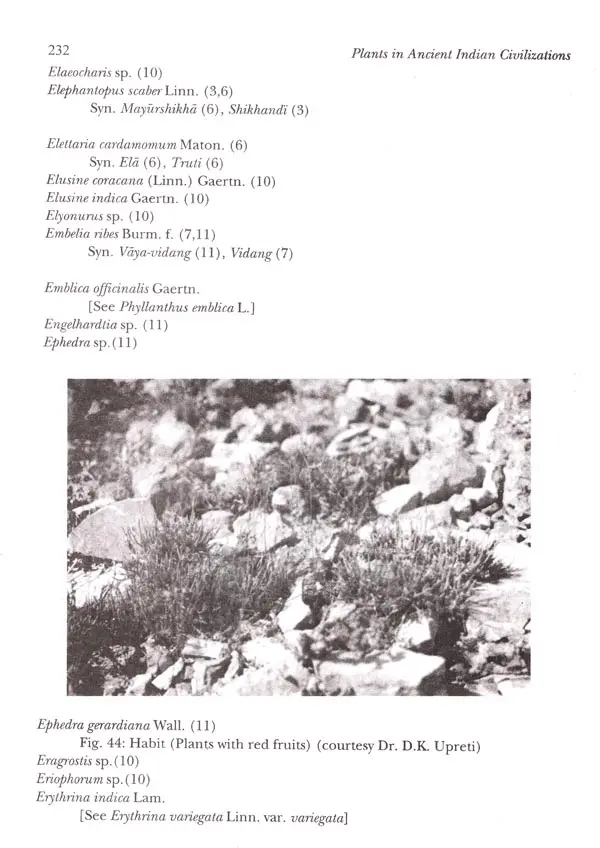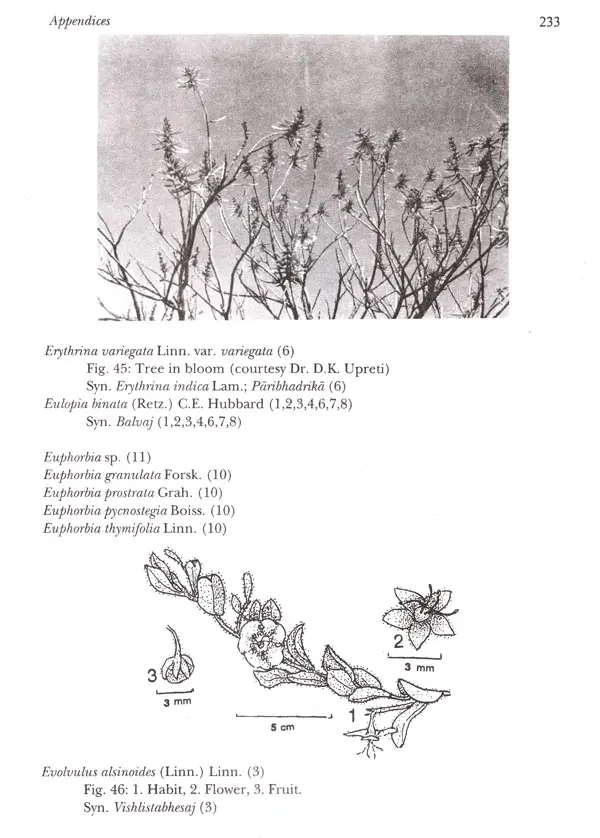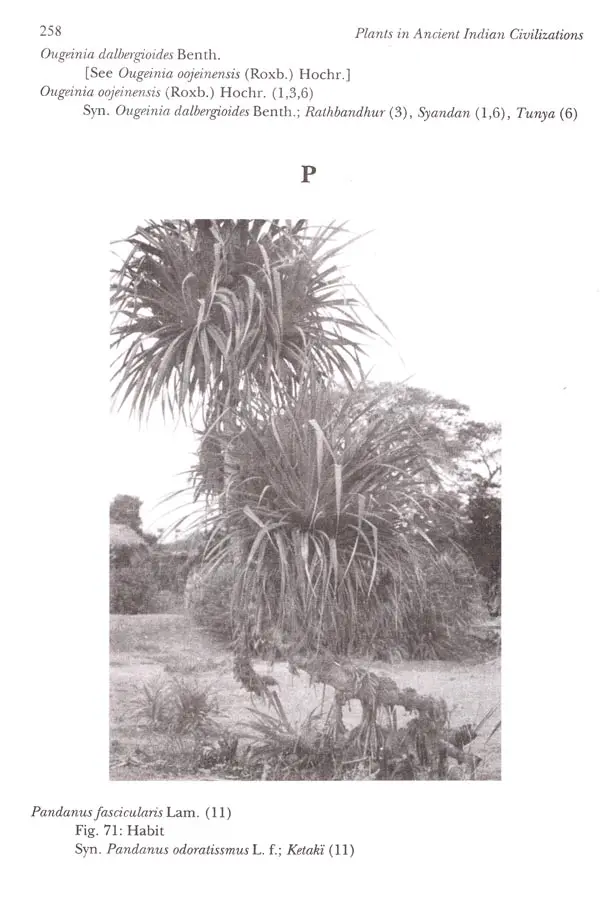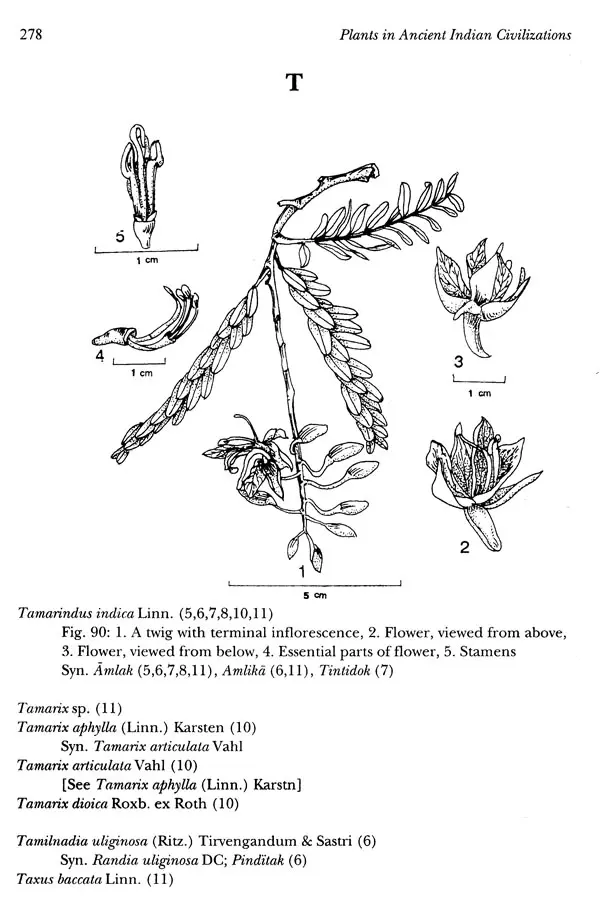
Plants in Ancient Indian Civilizations
Book Specification
| Item Code: | UAN352 |
| Author: | Ajay Singh |
| Publisher: | Agam Kala Prakashan, Delhi |
| Language: | English |
| Edition: | 2008 |
| ISBN: | 8173200734 |
| Pages: | 344 (Throughout B/w Illustrations) |
| Cover: | HARDCOVER |
| Other Details | 11.00 X 9.00 inch |
| Weight | 1.17 kg |
Book Description
This book was thus never planned but gradually developed as ideas after ideas entered my mind. In this connection an Urdu couplet comes to my mind, that goes as, "Mein akela hi chala tha janbe manzil magar, log milte gai aur karvan banta gava". I alone started the journey to my destination, but people went on joining me and the carvan was made). Soon nevertheless, it dawned upon me that the field that I had taken plunge into was seemingly like a botomless pit. At this late stage of my life, however, I was not in a position to pursue it Indefinitely as the time at my disposal is short and that too of uncertain duration. I had, therefore, no choice but to stop the information-gathering process at some point of time.
A few initial chapters of this book may appear as, our of tune with the central theme, but their incorporation as the prelude has been felt necessary in order to make the reader aware of India in its wellnigh pristine beauty and nature's exurberance, including the vegétation, where ancient Indian civilizations thrived and attained their exalted level of spiritual and scientific developments. It also contains a short account of different races that locally existed or immigrated to this land, their cultural interactions and resultant modified mindset of later populations.
The beautiful chapter entitled, "The Wonderland of the East (Le. India) in the Ragozin's work, was in all likelihood, meant for consumption of the readers of the West, who had no knowledge of the charm and beauty of this land. I have borrowed this title from the above. work for the enlightenment of the Indian generation of the day, which, in general, is perhaps equally ignorant of this aspect of India that has unbelievingly degraded to the present level.
The list of plants at the concluding part of the work is not merely the index of plant names but is much more than that. It has been presented as appendices I-III, and contains different types of information, that is explained at the beginning of each of it.
Now, on the word Hindu', I find that the Aryas of India in general, have been equated with Hindus of today by many authors. The word Hindu' was coined by the Persian invaders of the pre-Alexander period. It was used for the people living in the land of Sindhu (S is pronounced as H in the Arabic language). Some of the present day Hindus, no doubt represent that section of the Aryas that still follows the original or modified Aryan way of life. Others among the Aryas had had to embrance other faiths and are no more. Hindus but still represent the Aryan stock. Moreover, all the Hindus are not Aryas. Those of South India come from the Dravidian stock and still others from the Kolaran stock. For this reason 1 have refrained from using this word unless it was unavoidable.
He took his doctorate (Ph.d.) in Botany, precisely Lichenology (a branch of botany).
During early years (precisely seven) of his professional career he taught botany to degree classes.
Later, he joined National Botanical Research Institute, Lucknow, one among the chain of laboratories of Council of Scientific and Industrial Research, New Delhi.
For the first two years he worked on higher plants but later he switched over to the field of lichenology, which he remained stuck to, till his retirement from job.
He then worked as the Principal Investigator of five years research project carried out at National Research Laboratory for Conservation of Cultural Property. Lucknow and funded by Department of Science and Technology, New Delhi. Its objective was to study the harmful effect of lichen growth on the surface of Indian monuments and to suggest curative measures in this regard.
Beyond his professional career, he developed interest in the study of Indology, especially the ancient period of Indian history, Literature on ancient Indian history, mythology, religion, scriptures, ancient Indian thoughts (philosophy) and science) and archaeology provided him (a botanist) sufficient plant related matter that has resulted in the production of this book.
My long cherished desire to gain an insight into the ancient past of my native land found its partial fulfillment at the advanced age of my seventies, long after my retirement from service.
Fortunately, the first book on the subject that I had access to was the wonderful scholarly work, 'Vedic India' authored by Z.A. Ragozin. For its fascinating language and lucid style, the going through its pages was a delightful experience. It kept my fully absorbed from the beginning to its end. Being a botanist, what attracted me the most, was the frequent sprinkling of plant related matter in its text. that highlights plant connections of our ancient people. Its contents unequivocally speak of this relationship as not being confined to the physical level alone but also extending to man's mental and spiritual planes. It prompted me to make notes of such information (initially for no particular purpose in mind) and by the time I was through this work my notes on the subject swelled considerably in volume. Consultation of more and more literature on the ancient Indian history enabled me to make substantial additions. On scanning these notes, I came to realize that, with some effort, the gathered information that was of amorphous nature could be given a shape, and at that very moment the idea for attempting this work was born.
But to give reasonable justice to the task at hand, I felt the need of widening the horizons of these studies. It induced me to incorporate relevant matter from other fields also, like mythology, religion, philosophy, science and so on. The word "history' means, "total accumulation of the past events, esp. relating to human affairs or a particular nation, person, thing, etc." (Pocket Oxford Dictionary - eighth edition, 1992). In conformity with this definition, all the fields of study just mentioned do, in a way, become part of history when the paradigm shift in them occurring from time to time is put on record.
This compilation was thus never planned but gradually developed as ideas. after ideas entered my mind. In this connection an Urdu couplet comes to my mind, that goes as, "Mein akela hi chala tha janbe manzil magar, log milte gai aur karvan banta gaya", I alone started the journey to my destination, but people went on joining me and the carvan was made). Soon nevertheless, it dawned upon me that the field that I had taken plunge into was seemingly like a botomless pit.
